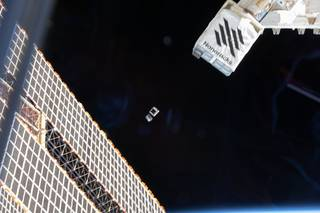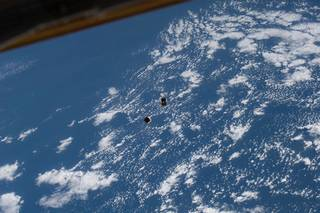
News
NASA Announces 13th Round of Candidates for CubeSat Space Missions
NASA has selected eight small research satellites from seven states to fly as either auxiliary payloads or deployments from the International Space Station (ISS). These missions are currently planned to launch in the 2023-2026 timeframe. The selected CubeSats were proposed by educational institutions, nonprofit organizations, and NASA centers in response to NASA’s CubeSat Launch Initiative (CSLI) call for proposals issued on August 9, 2021.
“CSLI fosters innovation in the science and technology community by launching CubeSats built by diverse organizations - from middle schools to NASA Centers,” said Samantha Johnson, Launch Services Office, NASA Headquarters. “These partnerships benefit NASA, commercial launch partners, and participants by providing a low-cost pathway to launch small satellites conducting scientific investigations, technology demonstrations, Earth observation, and more.”
CubeSats are a type of space research nanosatellite. In their smallest form, they measure about four inches on each side, weigh less than three pounds, and have an approximate volume of one quart. CubeSats are built using these standard dimensions or units (U) and are typically classified as 1U, 2U, 3U, 6U, or 12U in total size. Each selected CubeSat proposal was required to address aspects of the agency’s science, technology development, or education goals.
Launch opportunities for the selectees are provided through the Educational Launch of Nanosatellites (ELaNa) missions facilitated by NASA’s Launch Services Program (LSP). Selected CubeSats will launch aboard planned spaceflight missions led by NASA, other U.S. government agencies, or commercial organizations with coordination from LSP. After launch, the CubeSats will deploy into orbit from either the launch vehicle or the International Space Station.
CSLI 13th Round CubeSat Selections
The organizations and the CubeSats chosen during this selection round are:
· Arizona State University – Star-Planet Activity Research CubeSat (SPARCS) is devoted to photometric monitoring of M stars in the far-ultraviolet (UV) and near-UV, measuring the time-dependent spectral slope, intensity and evolution of M-star stellar UV radiation. SPARCS will continually observe each selected target over at least one complete stellar rotation (5-45 days). SPARCS will also advance UV detector technology by flying high quantum efficiency (QE), UV-optimized detectors developed at Jet Propulsion Laboratory (JPL).

A total of four CubeSats were deployed from the International Space Station on the ELaNa38 Mission.
Credits: NASA
· Olin College – The Space Weather Atmospheric Reconfigurable Multiscale Experiment (SWARM-EX) project provides an important step in the advancement of designing and building CubeSat constellations for space weather. SWARM-EX will consist of three identical CubeSats with novel technologies for radio communications between satellites, onboard propulsion, advanced data downlinks, and autonomous operations within the constellation. Each satellite will measure ionized and neutral gases in the Earth's upper atmosphere, studying structures seen near the equator.

A total of four CubeSats were deployed from the International Space Station on the ELaNa38 Mission.
Credits: NASA
· Arizona State University – The Deployable Optical Receiver Aperture (DORA) mission will perform a technology demonstration of a widefield infrared laser communication terminal for small satellites. The new technology enables communication networks in cis-lunar space and new mission classes, including constellations of small satellites for scientific investigations.
Resource:
https://www.nasa.gov/feature/nasa-announces-13th-round-of-candidates-for-cubesat-space-missions



